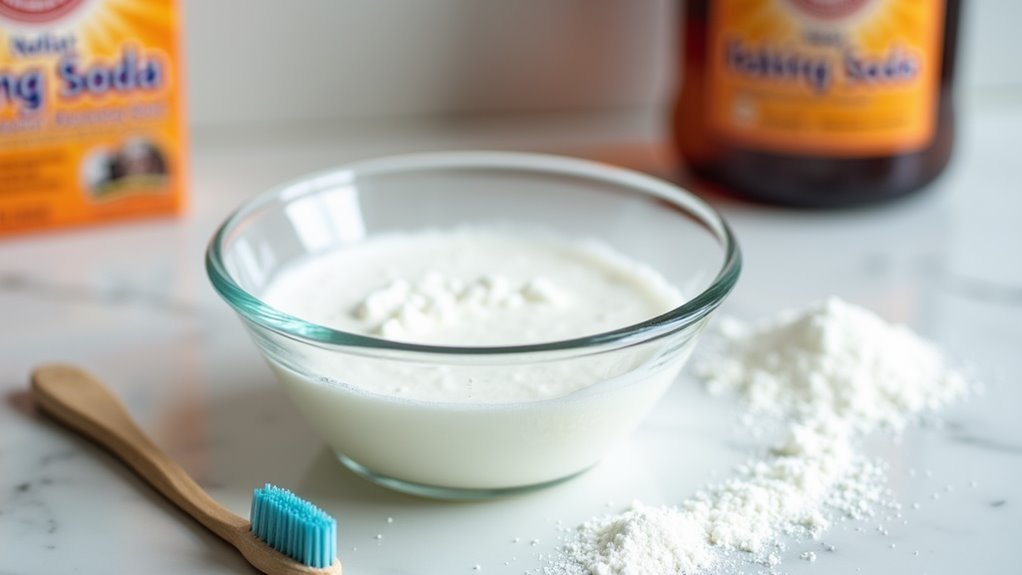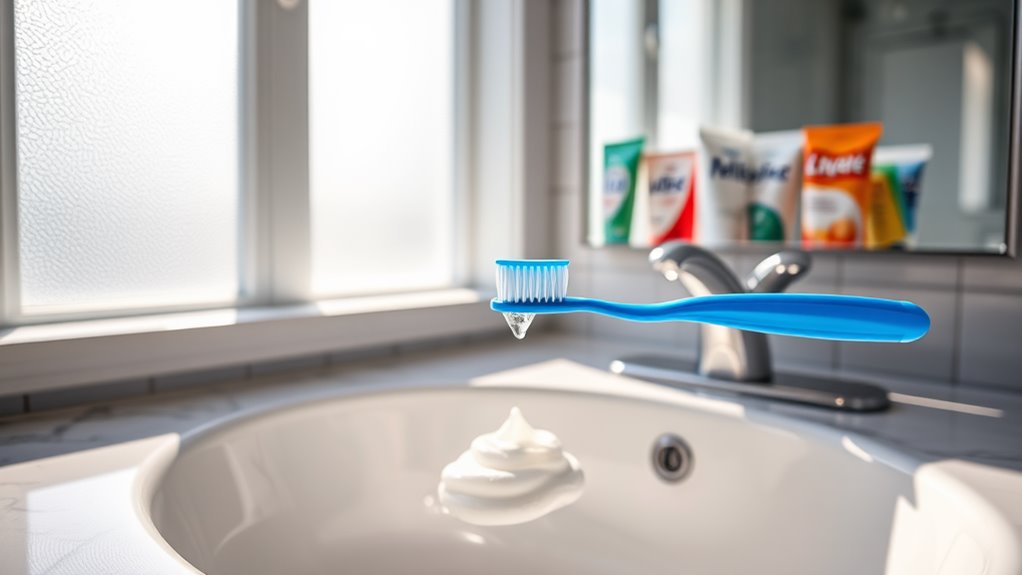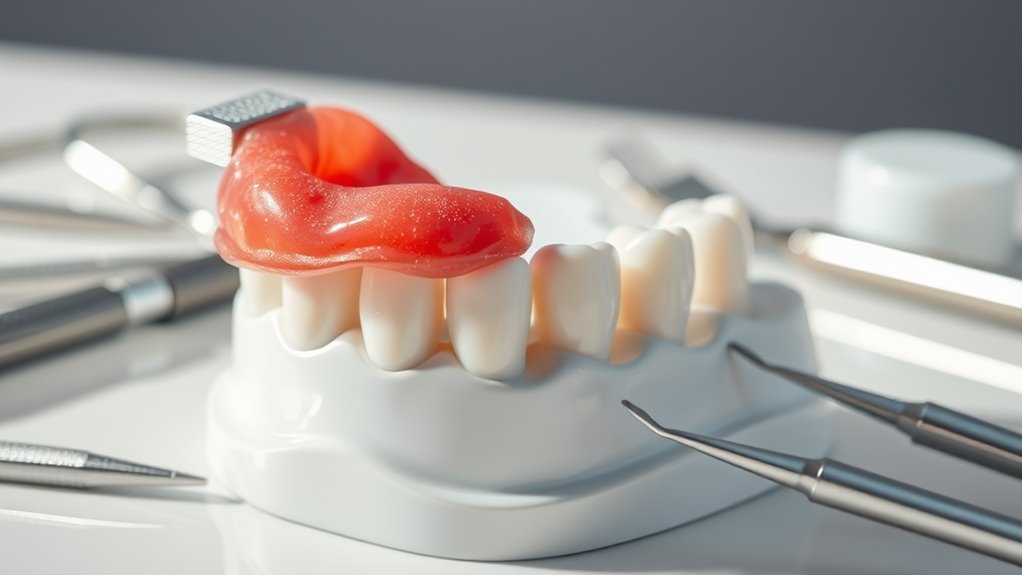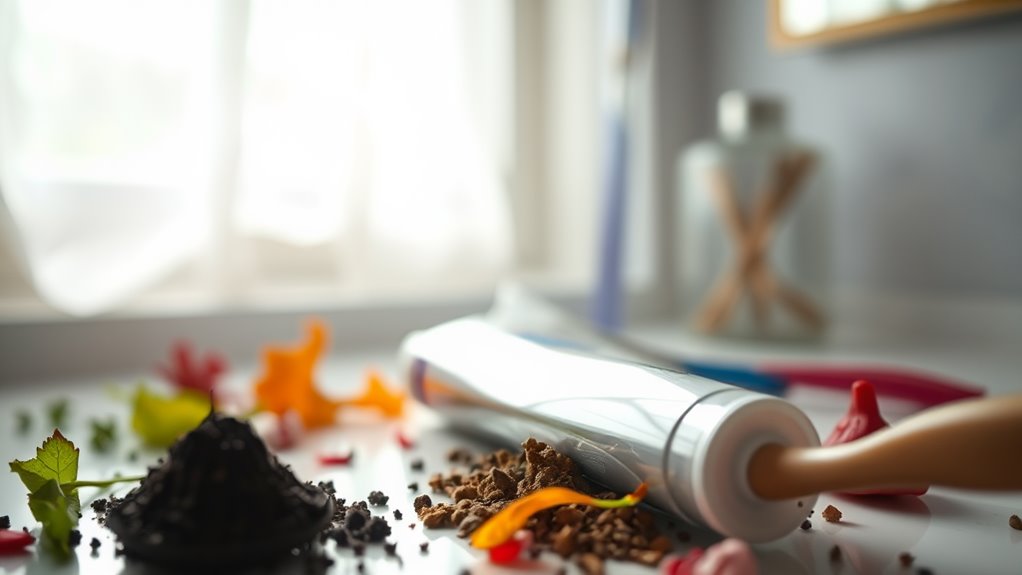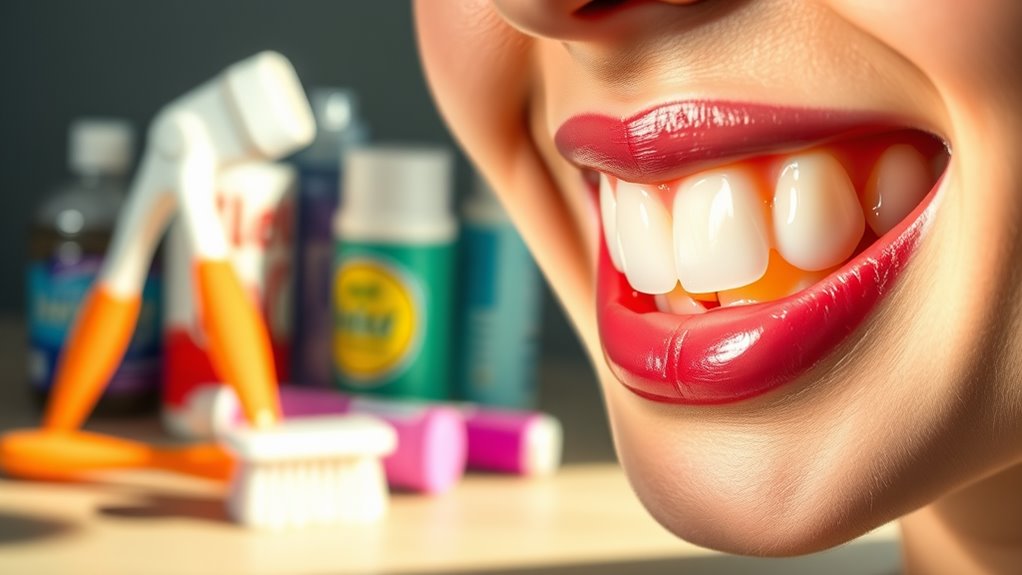This DIY Teeth Whitening Hack Went Viral – But Does It Work.
You’ve probably seen the latest DIY teeth whitening trend taking over social media – a simple mix of household ingredients promising pearly whites for pennies. While the chemical reaction can lift surface stains through oxidation, there’s more to consider than the appealing before-and-after photos suggest. Before you rush to try this viral hack, you’ll want to understand both the science behind it and the potential risks to your smile.
The Science Behind the Viral Teeth Whitening Method
While many DIY teeth whitening methods have gone viral on social media, understanding the science behind them is crucial before trying anything new. This particular hack involves mixing common household ingredients that create a chemical reaction targeting surface stains on your tooth enamel.
The viral DIY teeth whitening hack works through a process called oxidation, where molecules break down staining compounds into smaller particles. These particles are then easier to remove from your teeth’s surface. It’s similar to how professional whitening treatments function, but with readily available ingredients.
However, the chemistry isn’t as simple as mixing random ingredients. The effectiveness depends on proper concentration levels and pH balance. Additionally, many dentists warn that these DIY methods may lead to sensitive teeth and enamel damage.
If you’re considering this method, you’ll need to understand how these components interact with your tooth enamel to avoid potential damage while still achieving the desired whitening effect.
Safety Concerns and Dental Expert Insights
Despite the scientific basis behind this DIY method, dental experts have raised serious concerns about its safety and long-term effects on oral health.
While the ingredients might be natural, their improper use can damage your tooth enamel, irritate gums, and create lasting sensitivity issues.
Dr. Sarah Chen, a leading cosmetic dentist, warns that you’re essentially applying an acidic mixture directly to your teeth.
“The pH levels can be unpredictable, and there’s no way to control the concentration when mixing at home,” she explains.
You’re also risking uneven whitening results and potential chemical burns to your gum tissue.
Instead of risking your oral health, you’ll find safer alternatives through professional treatments or approved over-the-counter products.
If you’re determined to try natural methods, consult your dentist first – they can recommend appropriate options that won’t compromise your dental health while still achieving the results you want. Frequent use of baking soda can lead to enamel erosion, putting your teeth at greater risk.
Professional Alternatives Vs DIY Solutions
When comparing professional teeth whitening to DIY methods, you’ll find significant differences in both cost and effectiveness. Professional treatments offer scientifically proven results under expert supervision, while DIY solutions promise quick fixes at a fraction of the cost.
| Factor | Professional | DIY |
|---|---|---|
| Cost | $500-1000 | $10-50 |
| Results | Visible within 1-2 sessions | May take weeks |
| Safety | Monitored by professionals | Risk of misuse |
| Longevity | 1-3 years | 1-6 months |
If you’re tech-savvy and results-driven, you’ll want to weigh these options carefully. Professional treatments utilize advanced LED technology and prescription-strength peroxide, delivering precise, controlled applications. Meanwhile, DIY methods often rely on natural ingredients or over-the-counter products that may provide gradual improvements. Your choice should align with your budget, timeline, and desired outcome level. Additionally, following recommended usage guidelines is essential to avoid potential sensitivity and damage when opting for DIY solutions.
